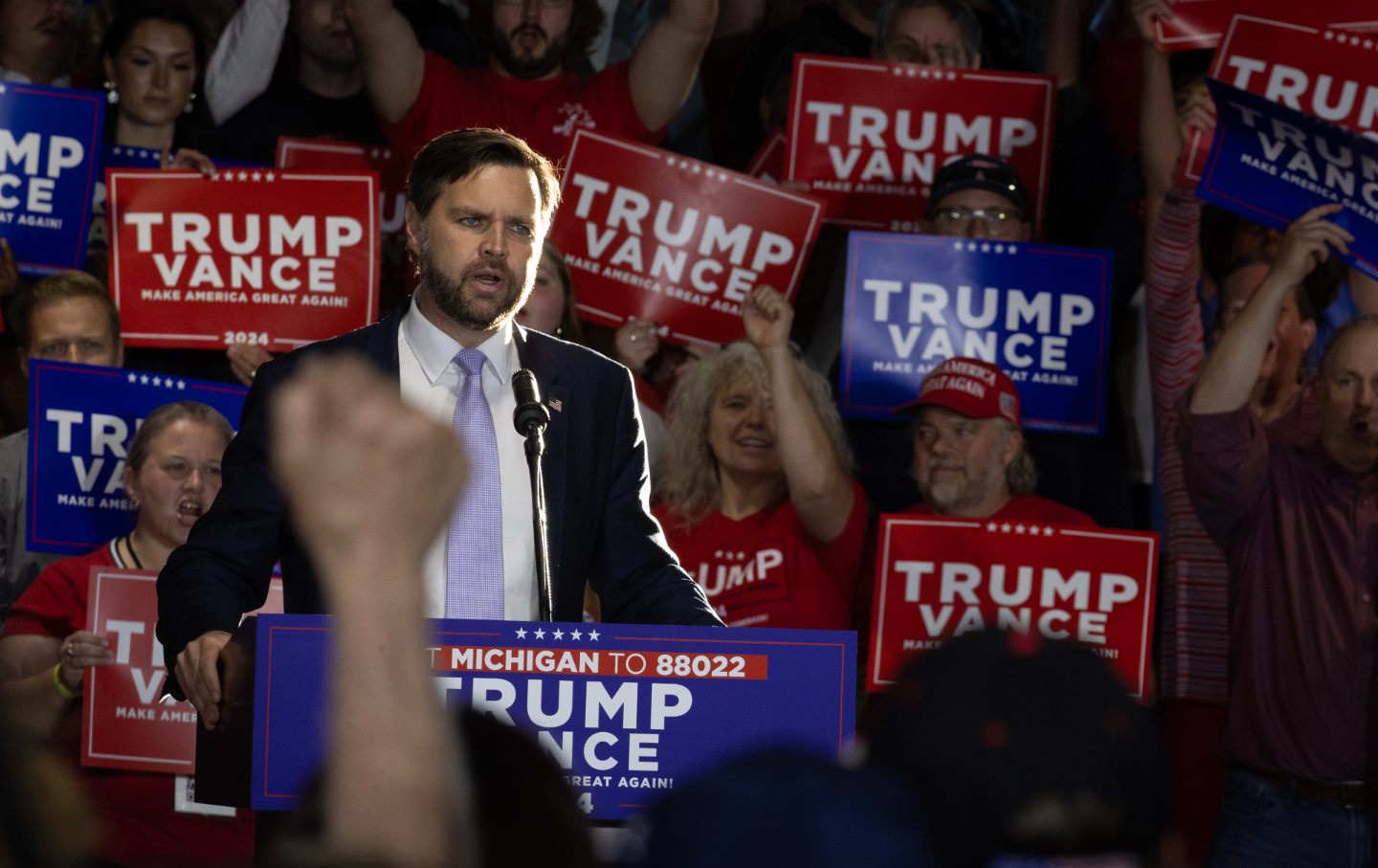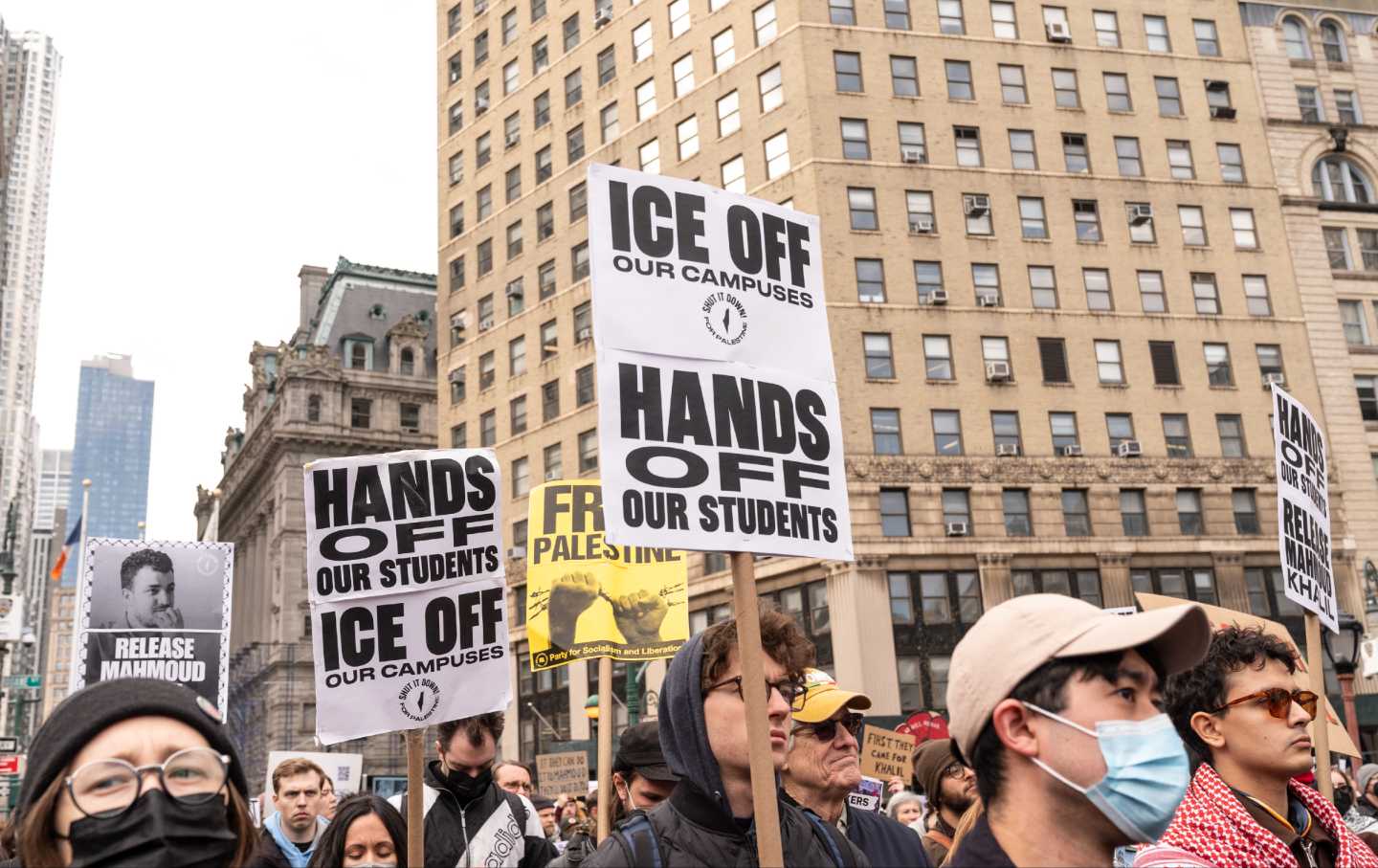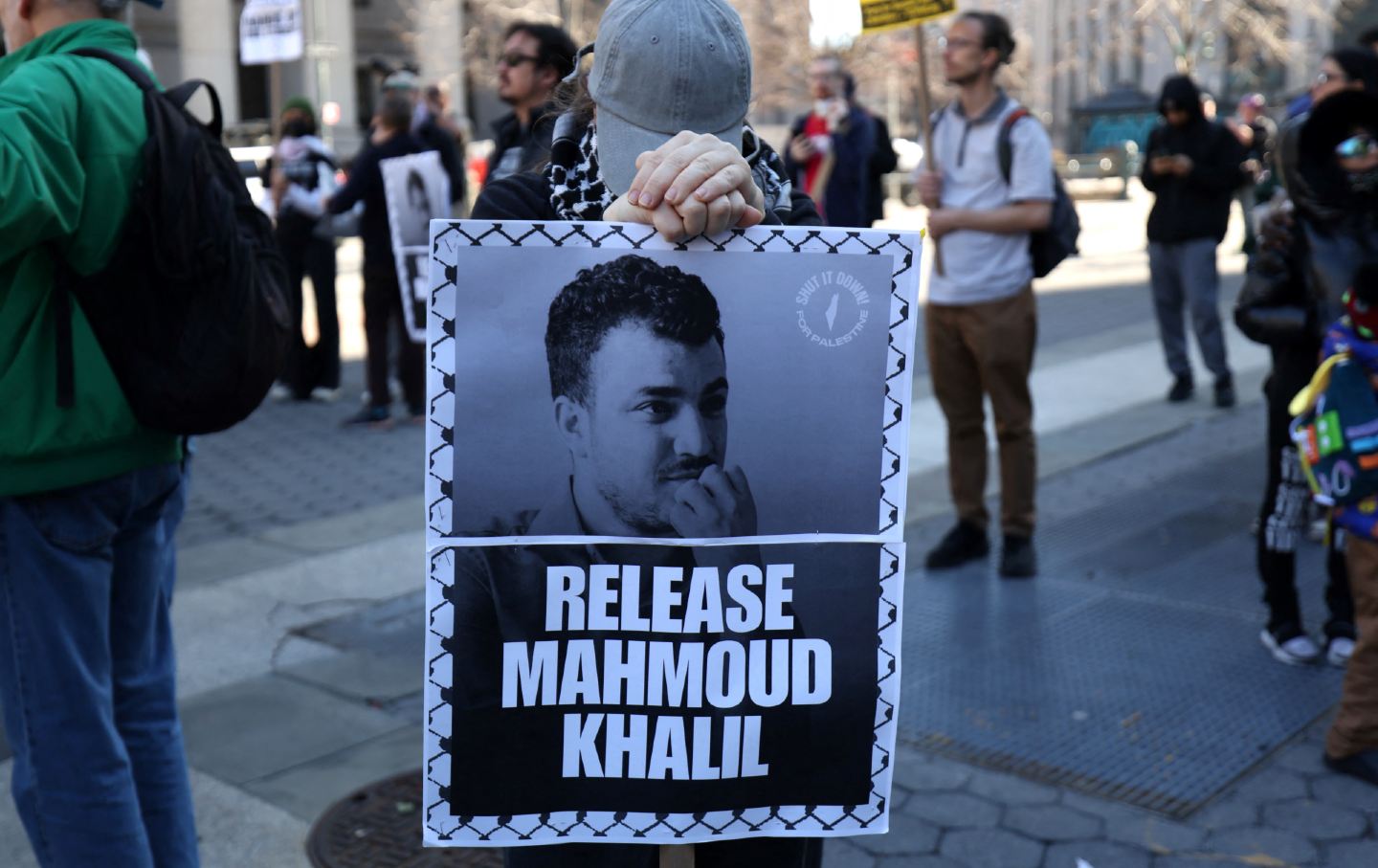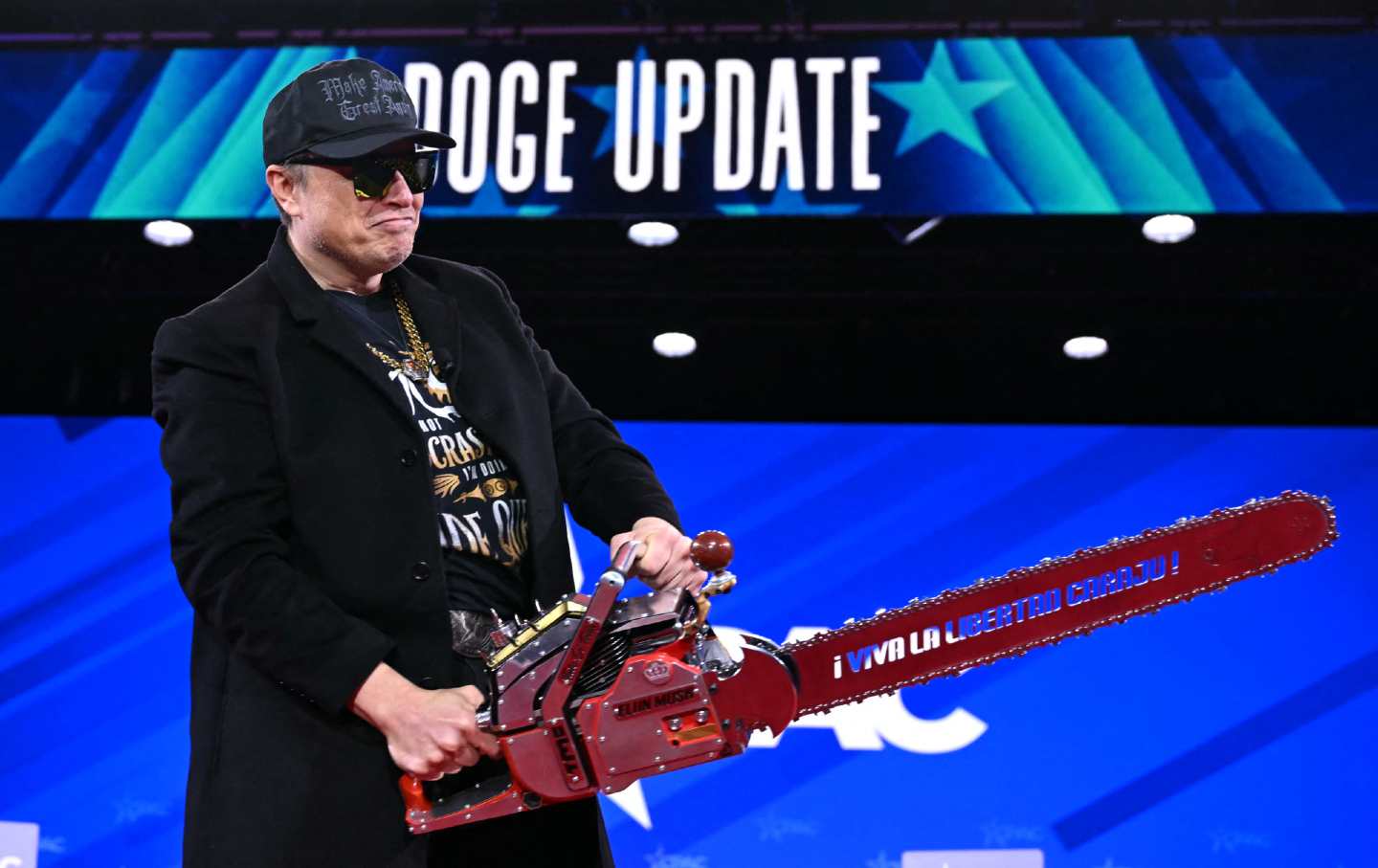Abortion Bans—and Shaming—Aren’t Boosting Fertility Rates. What Does?
Not only are abortion bans actively harmful to women and their families—they also don’t work to recreate the past as conservatives want them to.

In his 2021 remarks about “childless cat ladies” who “don’t really have a direct stake” in our country, Senator JD Vance invoked three examples of irresponsibly childless Americans: Vice President Kamala Harris; Transportation Secretary Pete Buttigieg, and Representative Alexandria Ocasio-Cortez. Unsurprisingly, there’s been a strong backlash to his comments, largely focused on affirming the value of the many child-free Americans (including Taylor Swift). But Vance’s examples had a specifically political focus. It wasn’t just that he didn’t approve of people without kids; he didn’t want the particular groups those three individuals represent running the country: women, people of color, and LGBT people. Not coincidentally, that coalition and their allies are on the brink of achieving a critical mass in our politics that could enact a family-support infrastructure that would positively impact all families. The conservative economic model, by contrast, depends on keeping many families poor, desperate to feed their kids, and willing to take any job for low wages. So conservatives are working hard to convince us to turn on one another, and to prevent that coalition from growing its political power.
The conservative pronatalist effort to increase the number of babies—through abortion bans, threats to contraception, and blather about how women are happiest when they’re at home with babies—aims to push women of all backgrounds out of civic life before they can build that infrastructure, which would definitively alter the current American business model for the better. US fertility rates have been trending downward since 2007, with an overall decline of 21.3 percent as of 2023, including a 68.5 percent decline among teens. While we might have expected rates to increase in abortion-ban states in 2023, an analysis by the Institute for Research on Women, Gender, and Sexuality at the University of Houston of Centers for Disease Control birth data shows that the fertility rate fell in all 50 states in that year, though they fell slightly less rapidly on average in ban states than in states without bans.
Multiple factors are in play in the declining rates in ban states: Some people in those states are still able to obtain abortions (the overall rate of legal abortion in the United States increased in 2023, as some in ban states travel for care, and self-managed abortions with medication or other means are also known to be rising). Many people are being more vigilant around their contraception, with increasing numbers of young women choosing sterilization, suggesting that there will be fewer unplanned pregnancies in the near term—and fewer planned pregnancies later. More young people are coming out into LGBT relationships that are naturally contracepted, also lowering the rate of unplanned pregnancies overall. And more people may be refraining from sex, fearing lack of access to abortion post-Dobbs or for other reasons.
There are bleaker causes for this shift as well. Many couples who don’t want to take on the health risks of pregnancy in ban states where doctors hesitate to render aid are choosing not to start the families they’d hoped for. And some pregnant women are dying before they give birth in ban states, because of lack of aid. All of these factors contribute to the 2023 fertility fall. Much more data in these realms is to come—but the signs are that if the bans were in some measure an effort to expand births to reassert patriarchal power and a status quo economy, it’s not working out that way. Trying to force women into families they don’t feel ready for while pushing them out of civic life only makes them even less likely to start families than they were already.
On the other hand, building a family-support infrastructure would make it easier for young couples today to combine career and family earlier, if they so choose. Such an infrastructure could encompass a universal sliding-scale childcare system, paid family leave, and public after-school and summer care programs, among other possible components. That’s the approach that has the greatest chance of increasing the declining fertility rate (though not a cure-all globally)—if we as a society decide that a higher fertility rate is indeed the goal (a topic for more discussion going forward). It’s women who’ve delayed childbearing in order to move up into policymaking roles and their allies who’ve brought us to a point where that’s possible.
Vance was factually wrong, of course, in claiming that Harris was “childless”—she’s actively helped raise her two stepchildren for 10 years. But the remarks are also out of touch with contemporary realities of birth timing and family formation: Buttigieg (then 39) and his partner adopted twins in 2022, and AOC (then 31) might yet choose to have children (or not, up to her)—the average age when women have their first child is now 27, and it’s 31 for college grads.
Later parenthood is common now, and it’s been key to the mass movement of women into civic life—including all aspects of employment and government, over roughly the last 35 years—as reliable birth control enabled increasing numbers to move up through the ranks. The more than 100 women I interviewed for my book Ready, a study on later motherhood, reported that delaying childbirth allowed them to complete their educations, climb the ladders at work, find a partner for the long term, and see something of the world before settling down. As a Supreme Court majority acknowledged in their 1992 Planned Parenthood v. Casey opinion, “the ability of women to participate equally in the economic and social life of the Nation has been facilitated by their ability to control their reproductive lives” —through access to both contraception and abortion. That transformation has both expanded the workforce, as more women have stepped into it, and catapulted us much closer to a full democracy, as those women with more money of their own and more civic presence could begin to directly represent their views. The hard-won expansion of social acceptance and access has similarly increased the representation in office of people of color and the LGBT community. More women moving into the workforce can also address concerns around future workforce declines (an efficiency that also lessens the climate burdens of expanded population).
For women who want children, a key part of the delay story has been the unaffordability of childcare. In a vicious cycle, in a time when few women were in office, they couldn’t create the childcare infrastructure that would let women with kids climb into the policymaking roles to create the infrastructure. As a result, use of birth control to delay first birth has served as a shadow benefits system for many women, allowing them the time needed to rise into positions in which they could earn enough to pay for care themselves and begin to build the family-support infrastructure for the generations following. Progress has been made in great part because women with birth-timing stories similar to those I spoke with for Ready, as well as women who didn’t have children, now comprise a large portion of the women in policymaking roles around our nation. That’s who Vance wants to force out.
Blocking from policymaking roles people who’ve delayed or refrained from biological procreation, as Vance advised, would effectively exclude most women who currently have the education, experience, and time to allow them to serve in those roles—specifically because they put having kids on hold. Rather than building a care infrastructure, Vance recommends that children should all be tended by their grandparents if their mother isn’t available.
That’s a possible solution for parents who have grandparents able, available, willing, and close by, though even they are not always able to do full-time care. And many parents don’t have family nearby. It’s also not always the best option—either for the many children who would be better served by trained, energetic early childhood educators, or for their grandparents, who may like to spend time with grandkids but don’t need a full-time job in retirement. Vance’s “solution” is another way of saying he doesn’t want to fund a universal sliding-scale childcare system, like the one that almost passed in 2021 as part of Biden’s Build Back Better bill. It lost by one vote, when business owner and Democratic West Virginia Senator Joe Manchin voted nay, arguing that he couldn’t support the “entitlement mentality” that would result. But the vote was closer than ever before.
For decades, the default business response has been that a nationalized family support infrastructure like universal childcare was just too expensive. But that has included no real analysis of the economic big picture: Though additional services could raise taxes on businesses and the wealthy, the taxes paid to fund childcare wages would then circulate, as those workers (largely women initially) and the women they enable to work consistently in other jobs pay their taxes and spend their wages in the businesses in their neighborhoods, returning to those businesses the taxes they paid in the form of an expanded customer base, and growing still more businesses by helping the community thrive. Since such taxes would accrue to all businesses equally, they wouldn’t affect competition, as is currently the case when some employers try to expand benefits on their own. Requiring participation of all employers would make life easier for them (ending the constant turnover as workers can’t find care) as well as for employees across the board. That’s a care economy.
That’s opposite to the world advocated by Vance or by Project 2025, the Heritage Foundation’s blueprint for firming up a teetering patriarchy. That 6,000-year-old socioeconomic system counts on uncontrolled fertility and compulsory heterosexuality to keep women of all backgrounds in service roles providing sex, babies, and household labor, with little or no income of their own to enable them to leave or civic voice to protest their situation. In its plan to “restore the family as the centerpiece of American life and protect our children,” Project 2025 aims to “delete” the terms “gender equity,” “diversity”, “sexual orientation,” reproductive rights“ (and others) from every piece of federal legislation, and, in deleting all protections for the groups who’ve been struggling to access civic voice, to return us to a hierarchical labor system where racial bias reigned, dads kept their noses to the grindstone at work and had little interaction with their kids, moms of all classes pumped out lots of workers in training but had limited access to the workforce themselves, and business owners grew fat on the surplus value generated by all. Senator Vance wrote the Introduction to an earlier Heritage Project report, and his calls to eject from government representatives of groups only now coming into civic voice and influence echo those of Project 2025.
In the absence of a family-support infrastructure, if young women are pushed into early births going forward, either through blocked access to abortion and contraception or because they take Vance’s advice and have kids earlier, many fewer would complete their studies and access the career-building jobs that would give them equitable civic voice and make them eligible for policymaking roles in the future. Pushing out young women as well as those currently in office who’ve delayed or refrained from having kids would also end movement toward building that care economy aimed at supporting all Americans to succeed, as Harris, Buttigieg, AOC, and their allies, including Joe Biden, have all advocated in various forms.
Such an infrastructure, along with equitable sharing of care work across genders at home, would address many of the concerns of young women and men who currently want kids but also want to keep their jobs and can’t afford care on their current salaries. Changing the status of care work by demonstrating that it’s valuable (through increasing the care available and paying care workers a decent wage) will be an important step toward equity in caregiving at home. Real progress on fixing climate change (another form of care work) so that people can feel it’s not unfair to bring kids into the world would also help.
Not only are abortion bans actively harmful to women and their families; they also don’t work to recreate the past as the forces of yesteryear indicate they want them to. If you actually want more Americans to expand their families, it’ll be up to the leaders who build a society that supports those families—of all backgrounds, and the people in them of all genders. Leaders who are not afraid of equity—oh right, that’s democracy. Those will include quite a few who delayed or refrained from starting a family themselves in order to rise to positions where they can help all families thrive.
Popular
“swipe left below to view more authors”Swipe →Support independent journalism that exposes oligarchs and profiteers
Donald Trump’s cruel and chaotic second term is just getting started. In his first month back in office, Trump and his lackey Elon Musk (or is it the other way around?) have proven that nothing is safe from sacrifice at the altar of unchecked power and riches.
Only robust independent journalism can cut through the noise and offer clear-eyed reporting and analysis based on principle and conscience. That’s what The Nation has done for 160 years and that’s what we’re doing now.
Our independent journalism doesn’t allow injustice to go unnoticed or unchallenged—nor will we abandon hope for a better world. Our writers, editors, and fact-checkers are working relentlessly to keep you informed and empowered when so much of the media fails to do so out of credulity, fear, or fealty.
The Nation has seen unprecedented times before. We draw strength and guidance from our history of principled progressive journalism in times of crisis, and we are committed to continuing this legacy today.
We’re aiming to raise $25,000 during our Spring Fundraising Campaign to ensure that we have the resources to expose the oligarchs and profiteers attempting to loot our republic. Stand for bold independent journalism and donate to support The Nation today.
Onward,
Katrina vanden Heuvel
Editorial Director and Publisher, The Nation
More from The Nation

“I’m Terrified”: Trans-Feminine Athletes in Their Own Words “I’m Terrified”: Trans-Feminine Athletes in Their Own Words
In part two of a series, trans women athletes describe what it’s like to compete in the Trump era.

Columbia Is Betraying Its Students. We Must Change Course. Columbia Is Betraying Its Students. We Must Change Course.
The administration is choosing complicity over courage in the case of Mahmoud Khalil. It’s time for the faculty to demand a new path.

The Trans Cult Who Believes AI Will Either Save Us—or Kill Us All The Trans Cult Who Believes AI Will Either Save Us—or Kill Us All
What the Zizians, a trans vegan cult allegedly behind multiple murders, can teach us about radicalization and our tech-addled politics.

We Are Asking the Wrong Questions About Mahmoud Khalil’s Arrest We Are Asking the Wrong Questions About Mahmoud Khalil’s Arrest
The only relevant question is not “How can the government do this?” It is “How can we who oppose this fascist regime stop it?”

DOGE’s Private-Equity Playbook DOGE’s Private-Equity Playbook
Elon Musk's rampage through the government is a classic PE takeover, replete with bogus numbers and sociopathic executives.

White Flops Rejoice! White Flops Rejoice!
DEI is being snuffed out in DC. Mediocre whiteness reigns. And we’re all going to suffer for it.


